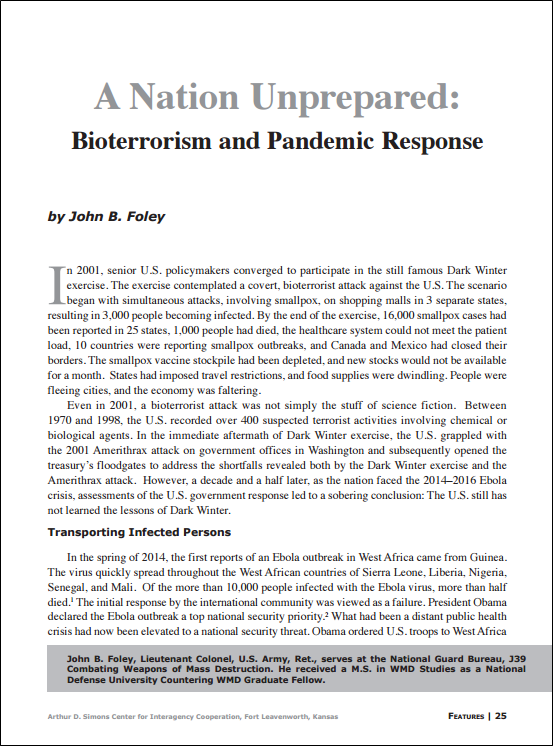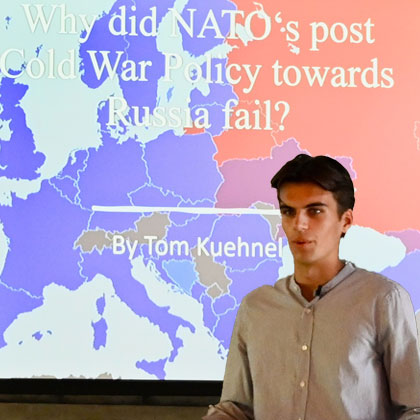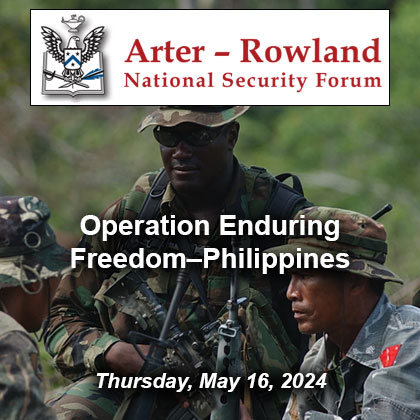Featured Article: Bioterrorism and Pandemic Response
Featured article:
A Nation Unprepared: Bioterrorism and Pandemic Response
by John B. Foley
In 2001, senior U.S. policymakers converged to participate in the still famous Dark Winter exercise. The exercise contemplated a covert, bioterrorist attack against the U.S. The scenario began with simultaneous attacks, involving smallpox, on shopping malls in 3 separate states, resulting in 3,000 people becoming infected. By the end of the exercise, 16,000 smallpox cases had been reported in 25 states, 1,000 people had died, the healthcare system could not meet the patient load, 10 countries were reporting smallpox outbreaks, and Canada and Mexico had closed their borders. The smallpox vaccine stockpile had been depleted, and new stocks would not be available for a month. States had imposed travel restrictions, and food supplies were dwindling. People were fleeing cities, and the economy was faltering.
Even in 2001, a bioterrorist attack was not simply the stuff of science fiction. Between 1970 and 1998, the U.S. recorded over 400 suspected terrorist activities involving chemical or biological agents. In the immediate aftermath of Dark Winter exercise, the U.S. grappled with the 2001 Amerithrax attack on government offices in Washington and subsequently opened the treasury’s floodgates to address the shortfalls revealed both by the Dark Winter exercise and the Amerithrax attack. However, a decade and a half later, as the nation faced the 2014–2016 Ebola crisis, assessments of the U.S. government response led to a sobering conclusion: The U.S. still has not learned the lessons of Dark Winter…
Read the full article
A Nation Unprepared: Bioterrorism and Pandemic Response PDF
Download the complete edition
IAJ 8-2 (2017) PDF
IAJ 8-2 (2017) ePub
John B. Foley, Lieutenant Colonel, U.S. Army, Ret., serves at the National Guard Bureau, J39 Combating Weapons of Mass Destruction. He received a M.S. in WMD Studies as a National Defense University Countering WMD Graduate Fellow.

Posted: June 6, 2017 by Simons Center
READ THE LATEST UPDATES FROM THE SIMONS CENTER
"*" indicates required fields


